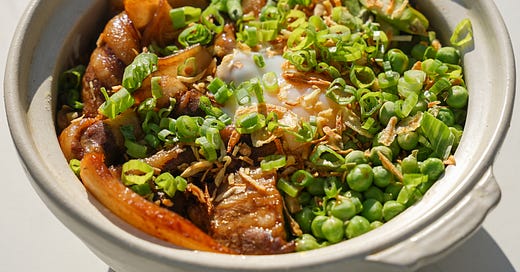I’m heading to Ohio this week to spend some days with family. I’m packing my suitcase with presents, loads of monstrous lemons from our tree, and maybe some ong choy (Chinese water spinach) if I can find it before I leave because I want my dad to cook it for me but he said there isn’t any good ong choy in Cleveland. By the end of the trip I’ll have off …
Keep reading with a 7-day free trial
Subscribe to Have You Eaten Yet? to keep reading this post and get 7 days of free access to the full post archives.




